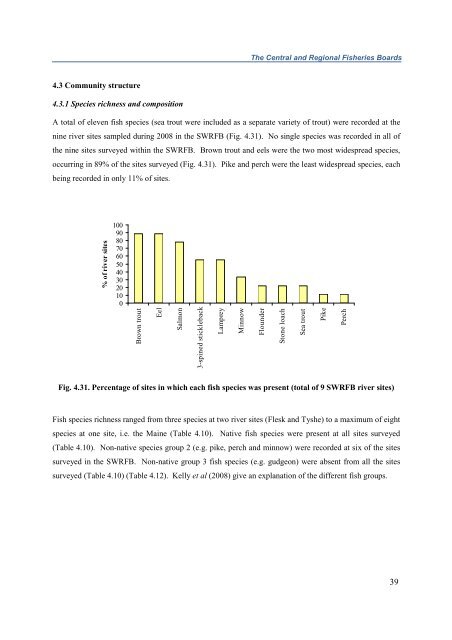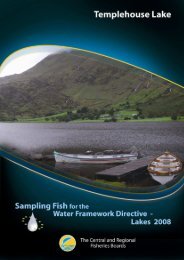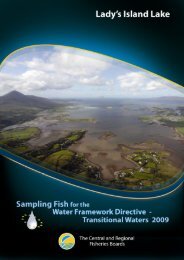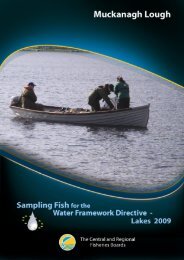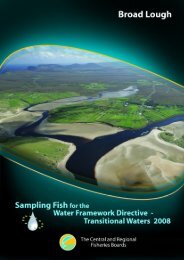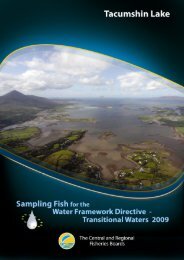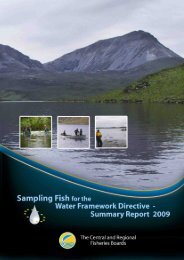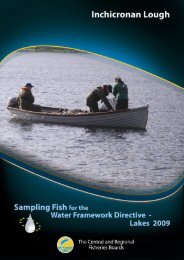HERE - Inland Fisheries Ireland
HERE - Inland Fisheries Ireland
HERE - Inland Fisheries Ireland
You also want an ePaper? Increase the reach of your titles
YUMPU automatically turns print PDFs into web optimized ePapers that Google loves.
The Central and Regional <strong>Fisheries</strong> Boards4.3 Community structure4.3.1 Species richness and compositionA total of eleven fish species (sea trout were included as a separate variety of trout) were recorded at thenine river sites sampled during 2008 in the SWRFB (Fig. 4.31). No single species was recorded in all ofthe nine sites surveyed within the SWRFB. Brown trout and eels were the two most widespread species,occurring in 89% of the sites surveyed (Fig. 4.31). Pike and perch were the least widespread species, eachbeing recorded in only 11% of sites.1009080706050403020100Brown troutEelSalmon3-spined sticklebackLampreyMinnowFlounderStone loachSea troutPikePerch% of river sitesFig. 4.31. Percentage of sites in which each fish species was present (total of 9 SWRFB river sites)Fish species richness ranged from three species at two river sites (Flesk and Tyshe) to a maximum of eightspecies at one site, i.e. the Maine (Table 4.10). Native fish species were present at all sites surveyed(Table 4.10). Non-native species group 2 (e.g. pike, perch and minnow) were recorded at six of the sitessurveyed in the SWRFB. Non-native group 3 fish species (e.g. gudgeon) were absent from all the sitessurveyed (Table 4.10) (Table 4.12). Kelly et al (2008) give an explanation of the different fish groups.39


